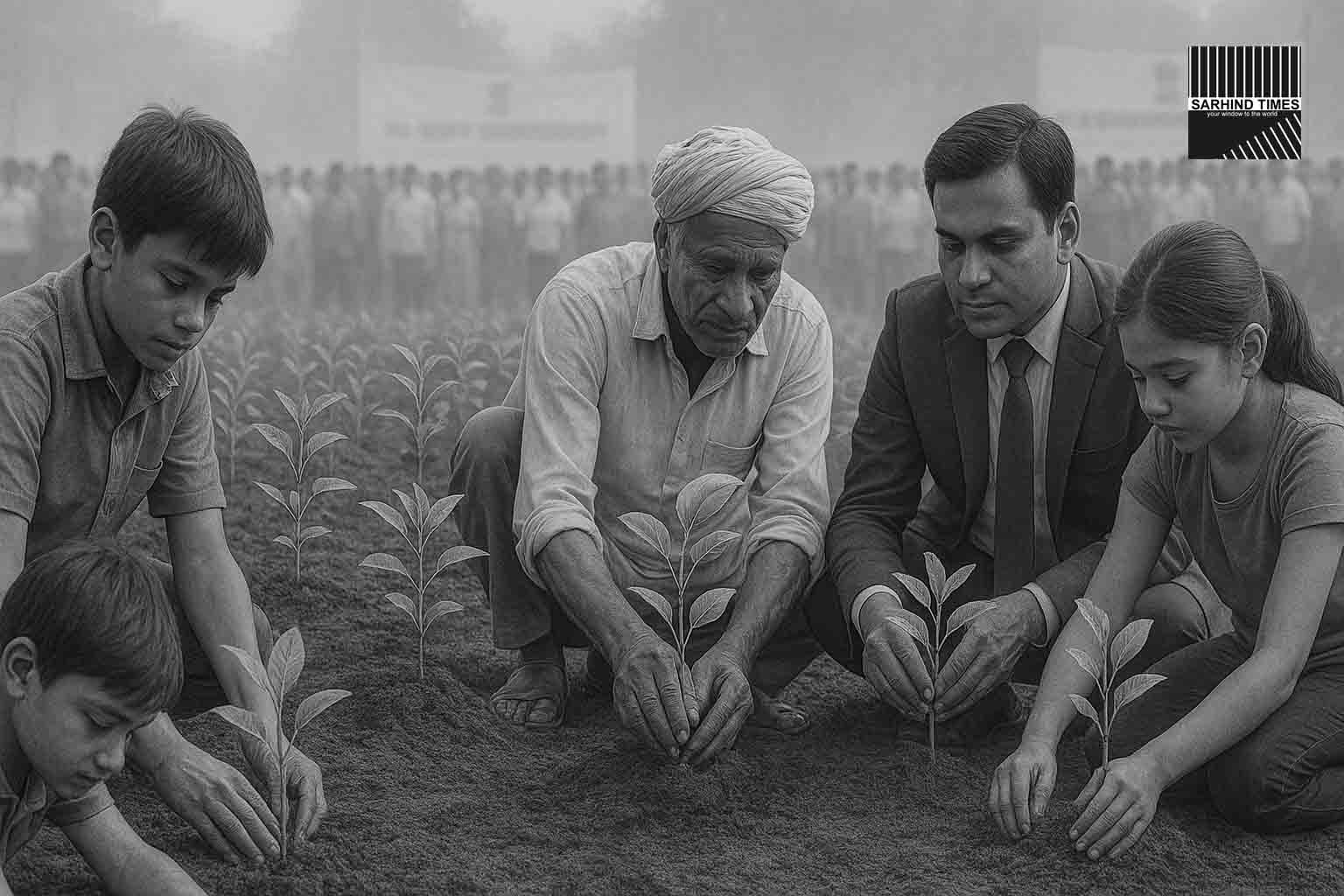Introduction: A Green Pledge on a National Occasion
Uttar Pradesh has launched an ambitious environmental campaign under the banner of “Seva Parv”, beginning on September 17—Prime Minister Narendra Modi’s birthday. Over the course of two weeks, the state plans to plant 15 lakh saplings while also conducting drives on cleanliness, plastic reduction, and water conservation.
The initiative combines symbolic action with mass mobilization, positioning itself as a visible contribution to both climate resilience and public participation in governance. However, the campaign also invites critical questions: Can such high-profile drives deliver lasting impact, or do they risk remaining performative gestures?
The Core of “Seva Parv”
Plantation Drive
- Target: 15 lakh saplings across urban and rural areas.
- Focus: Native species for ecological balance and survival.
- Implementation: Schools, gram panchayats, NGOs, and self-help groups to participate.
Complementary Initiatives
- Cleanliness Drives – Focus on urban waste segregation, rural sanitation, and beautification of public spaces.
- Plastic Reduction – Awareness campaigns against single-use plastic; distribution of cloth/jute bags.
- Water Conservation – Restoration of ponds, rainwater harvesting awareness.
- Public Participation – Volunteers, students, and local leaders to lead by example.
Why Such Campaigns Matter
1. Mass Mobilization
These campaigns bring environment into the public imagination—schools, media, and citizens become stakeholders.
2. Symbolic Power
Linking environmental drives with the Prime Minister’s birthday provides visibility and political weight, ensuring administrative machinery acts with urgency.
3. Awareness Creation
Beyond planting, such drives can shape social attitudes toward waste, plastic, and conservation.
The Challenges and Criticisms
While ambitious, such efforts face recurring challenges:
- Survival of Saplings – India has a history of high plantation drives with low sapling survival rates (sometimes below 30%).
- Short-Termism – Two-week campaigns often fade without year-round follow-up.
- Plastic & Waste Enforcement – Awareness without strict implementation rarely sustains behavior change.
- Performative Politics – Critics argue tying plantation drives to political anniversaries risks making environment a backdrop for symbolic celebration rather than serious governance.
The Need for Follow-Through
Key Measures for Long-Term Impact:
- Monitoring Systems – Geo-tagging saplings, survival audits every six months.
- Community Stewardship – Local panchayats and schools assigned maintenance responsibility.
- Waste Infrastructure – Expanding waste-to-energy plants, recycling systems, and municipal enforcement.
- Plastic Alternatives – Subsidies for cloth/jute industry to create sustainable replacements.
- Water Systems – Linking plantation with watershed management for survival and ecological integration.
National and Global Context
- India’s Green Goals: India targets restoring 26 million hectares of degraded land by 2030 under the Bonn Challenge. Drives like Seva Parv contribute to this.
- Global Comparisons: China’s Green Great Wall project and Africa’s Great Green Wall Initiative show that success requires sustained policy, not symbolic campaigns.
- Public Participation: Countries like Costa Rica have embedded community involvement in conservation, ensuring higher sapling survival and biodiversity gains.
Seva Parv as Environmental Politics
Linking environmental campaigns to national leaders’ birthdays is a hallmark of India’s political culture. While critics see this as performative, it undeniably garners political will and visibility—two factors without which environmental issues often remain sidelined.
Potential Impacts for Uttar Pradesh
- Urban Areas: More green cover, better waste segregation, and reduced plastic use.
- Rural Areas: Improved water bodies, community participation in sapling care.
- Youth Engagement: Schools and colleges may cultivate eco-conscious citizens.
- Climate Resilience: Trees act as carbon sinks, reduce heat islands, and enhance biodiversity.
Conclusion: Symbolism vs. Substance
Uttar Pradesh’s “Seva Parv” is an ambitious gesture that could, if followed through, leave a tangible environmental legacy. The key lies in sustained monitoring, accountability, and community engagement beyond the fortnight-long spectacle.
Planting 15 lakh saplings is not just about numbers; it is about nurturing green lungs for generations. If the state can ensure survival and integrate these drives into long-term policy, Seva Parv could become a model of participatory environmental governance. Otherwise, it risks being remembered as another fleeting campaign tied to a political calendar.
#SevaParv #PlantationDrive #CleanIndia #PlasticFree #GreenUP #ClimateAction #SustainableFuture #SarhindTimes






















+ There are no comments
Add yours